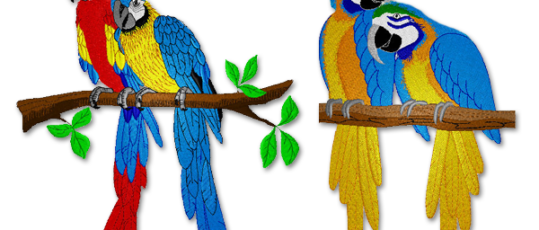Grasping the Needlework Digitizing Process: Your Ultimate Overview
Embroidery digitizing is a thorough craft that calls for accuracy and competence to translate detailed styles into digital formats for device needlework. As craftsmens start this trip to grasp the embroidery digitizing procedure, a detailed understanding of the basics sets the structure for excellence. Past the simple expertise lies a world of innovative software program, specialized devices, and nuanced methods waiting to be checked out. By delving into the nuances of digitizing, one can open a world of creative opportunities and elevate their needlework projects to brand-new heights.

Recognizing Needlework Digitizing Fundamentals
Embroidery digitizing essentials create the structure upon which elaborate layouts are translated right into machine-readable styles for exact stitching. This preliminary step in the needlework digitizing procedure is crucial for ensuring that the final stitched product is a faithful representation of the original style. Recognizing needlework digitizing basics involves realizing vital concepts such as stitch kinds, stitch direction, thickness, rug, and draw settlement.
Sew kinds play an essential function in establishing the aesthetic and textural outcome of the embroidered layout. By selecting the appropriate stitch type, whether it be satin, fill, or running stitch, digitizers can attain the preferred result and enhance the general high quality of the needlework. Furthermore, stitch direction affects the flow and measurement of the style, while density establishes the spacing and coverage of the stitches.
Moreover, rug stitching offers stability to the design by safeguarding the textile and avoiding distortion during the needlework procedure. Draw payment is another necessary consideration to combat the natural propensity of textile to contract when stitched. Grasping these embroidery digitizing basics is fundamental for developing professional-quality stitched products.
Choosing the Right Digitizing Software Program
Picking the ideal digitizing software application is an essential decision that considerably impacts the effectiveness and high quality of the embroidery digitizing process. Digitizing for Embroidery. When selecting the best digitizing software, it is vital to think about aspects such as the intricacy of designs you prepare to develop, the user-friendliness of the software, the level of client support supplied, and the compatibility with your embroidery maker
There are numerous digitizing software application alternatives available on the market, varying from basic programs for novices to innovative software for expert digitizers. Some preferred choices consist of Wilcom EmbroideryStudio, Hatch Embroidery Software Program, and PulseID. These software provide a large range of tools and functions to assist you create elaborate layouts effortlessly.
Before choosing, it is recommended to discover the different software alternatives through cost-free tests or trials to identify which one finest matches your demands. Additionally, reviewing reviews and looking for recommendations from seasoned digitizers can provide useful insights into the toughness and weak points of each software (Digitizing for Embroidery). By very carefully examining your demands and contrasting the attributes of various digitizing software, you can make an enlightened selection that enhances your needlework digitizing process
Digitizing Devices and Strategies

Optimizing Design Setup for Needlework
Grasping the intricacies of style setups is essential in accomplishing optimal results in the embroidery digitizing process, structure upon the structure laid by recognizing digitizing tools and techniques. When maximizing style setups for embroidery, it is important my link to take into consideration factors such as stitch type, density, padding, pull settlement, and registration. Registration settings straighten various aspects of the layout accurately, maintaining general style stability.

Troubleshooting Common Digitizing Issues
When experiencing typical digitizing concerns throughout the needlework process, it is necessary to recognize the origin and carry out efficient services promptly. One common issue is stitch density issues, where stitches might be too thick, creating the material to pucker, or as well sparse, leading to gaps in the layout. Changing the stitch density setups in the digitizing software can assist resolve this problem.
One more regular difficulty is thread breaks during the needlework process. This can happen because of different factors such as incorrect stress settings, plain needles, or making use of low-quality thread. Making sure proper maintenance of the needlework maker, including regular needle changes and stress adjustments, can minimize the incident of string breaks.
Furthermore, design enrollment errors can result in misaligned components within the needlework layout. Checking the style alignment in the digitizing software and making required changes prior to sewing can aid in avoiding this concern. By dealing with these common digitizing issues promptly and efficiently, you can ensure a smoother needlework process and high-grade ended up products.
Verdict
In conclusion, grasping the embroidery digitizing procedure click reference calls for a solid understanding of the essentials, the right selection of software program, and understanding of devices and strategies. Enhancing design settings and repairing usual digitizing problems are critical actions in making sure top quality needlework outcomes. By complying with these steps vigilantly, one can accomplish precision and efficiency in the digitizing process.